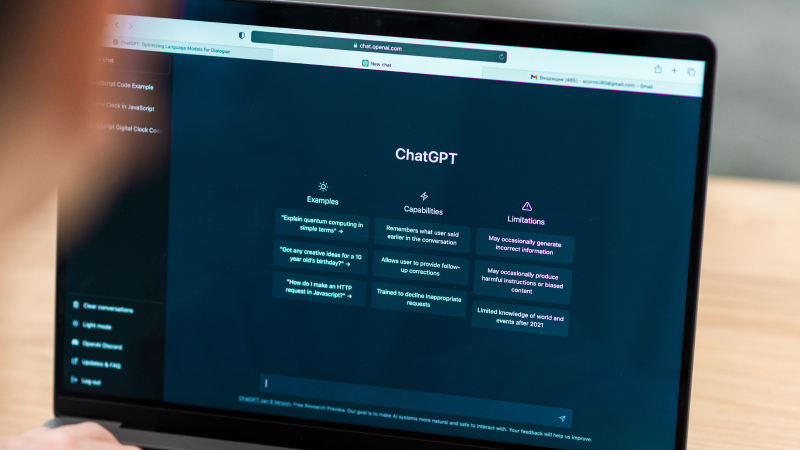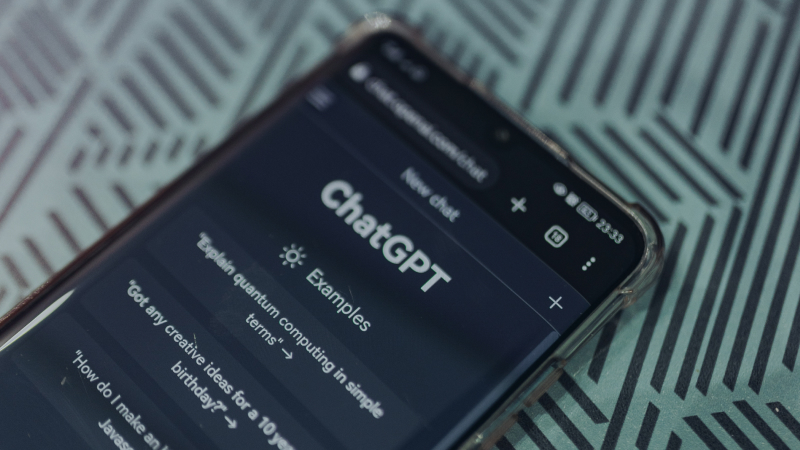Welcome to the fascinating world of generative AI. This domain of technology is at the cutting edge of innovation, consistently redefining the limits of what we deem possible.
Let’s begin by understanding an essential mechanism intrinsic to generative AI – “prompting.” This crucial element forms the cornerstone of our interaction with these advanced models.
What’s prompting, you ask?
Think of prompting as the ignition key to your AI engine. It’s a simple phrase, a question, or a statement that you feed the AI model to spark it into action.
The model then scurries through its massive dataset, gathering bits and pieces to create a response tailored to your prompt.
In essence, it’s your conversation starter or your order to the AI!
Why is prompting important?
Let’s draw an analogy. Say, you’re at a crowded café, and you want to order a coffee. If you vaguely ask the barista for a drink, you could end up with any beverage, maybe even tea or juice!
If you specifically ask for a “Large Americano with a splash of cold milk,” you get exactly that. Similarly, an ambiguous or unclear prompt to an AI might yield an off-target response, while a well-defined prompt can get you the exact information you need.
In the vast AI universe, a well-crafted prompt acts like a precise GPS location. It guides the AI, narrowing down the information to hone in on the specifics that will best answer your request.
The power of AI lie not just in its vastness but also in its precision – and that’s all about effective prompting.
Alright, you say, but what’s the goal here?
We’re here to arm you with the secrets of successful prompting!
We’ll dive into the science behind AI responses and learn why some prompts work better than others. Together, we’ll explore:
- Prompt Crafting 101 – How to make your prompts clear, specific, and, most importantly, effective.
- Open or Closed? – The differences between open-ended and closed-ended prompts and when to use each.
- Advanced Techniques – How to use chained prompts and iterative refinement to get even more out of your AI.
Finally, we’ll delve into some powerful commands that you can use to unleash the full potential of generative AI. We’ll learn how to measure the effectiveness of our prompts and continuously improve them.
Boost your ChatGPT experience!
The Science Behind Prompting

Together, we will unveil the mystery behind the AI’ recipe’, focusing on training data, algorithms, and how responses are generated from your prompts.
Understanding How Generative AI Models Work
Generative AI models, like our friend ChatGPT, are well-trained chefs who’ve spent countless hours perfecting their craft. They learn from a vast menu of information (or data) and use their learned knowledge to whip up insightful responses.
The Role of Training Data and Algorithms
Think of training data as the cookbook for AI models. This cookbook is full of examples, sentences, phrases, and even whole books, from which the AI learns language, knowledge, and reasoning abilities.
The more varied and high-quality the ‘recipes’ (or data) in the cookbook, the better the AI can understand and generate language.
Now, let’s consider the chef’s secret weapon – their special sauce if you will. That’s where the algorithms come in. Algorithms are a set of instructions that guide the AI to understand patterns, concepts, and structures in the training data.
They’re like the step-by-step cooking instructions that the chef follows to create a mouth-watering dish.
Algorithms in AI help it understand language nuances, comprehend context, and make predictions.
So, when an AI is trained using vast amounts of data and a sophisticated algorithm, it develops an impressive ability to generate human-like text.
How AI Models Generate Responses Based on Prompts
You’ve got the training data and the algorithms down. But how does it all come together when you prompt the AI?
Let’s break it down:
- Step One – Receiving the Prompt: The moment you type in a prompt, the AI’s gears begin to turn.
- Step Two – Understanding the Prompt: The AI uses its training to understand the prompt. It figures out the context, the language nuances, and the kind of response expected.
- Step Three – Crafting the Response: Here’s where the AI whips up a tailored response. It uses the patterns it learned from the training data and follows the algorithm’s instructions to generate a relevant, coherent response.
- Step Four – Delivering the Response: The AI sends the response back to you.
Remember, the better your prompt, the more likely you are to receive a satisfying response.
Wrapping it up, generative AI is a masterful blend of colossal training data and intricate algorithms. Its power to generate insightful responses lies in its training and effective prompts.
And as we navigate further, we’ll uncover how to make your prompts truly powerful.
The Impact of Effective Prompting on AI-Generated Results

Imagine walking into a library with millions of books. Your prompt is like a librarian who knows exactly where to find the book you’re looking for.
The clearer you are with your request, the faster and more accurately you get your desired book. This same principle applies to prompting in AI.
A well-crafted prompt leads to:
Improved Relevance and Accuracy
If your prompts are clear, specific, and well-defined, the AI model can generate responses that are more relevant and accurate.
For example, asking, “What’s the weather like?” is a good prompt, but it’s missing specificity. The AI might struggle to provide a useful answer because it doesn’t know the location you’re interested in.
However, if you ask, “What’s the weather like in New York City today?” – that’s a clear, specific prompt. The AI knows exactly what you’re asking for and can provide a relevant and accurate response.
Reduced Need for Manual Intervention and Editing
Effective prompts save time and effort by reducing the need for manual intervention and editing.
The better your prompt, the closer the AI’s response will be to what you need, minimizing the need for tweaks and edits.
It’s akin to giving clear instructions to a team member – it leads to fewer errors and revisions.
Common Pitfalls and Challenges in Crafting Prompts

As you experiment with prompts, you may stumble upon some common challenges.
- Vagueness: A common pitfall is being too vague or broad. Remember, the AI is not a mind reader. For example, if you ask, “Tell me about it,” the AI won’t know what “it” refers to. Be specific!
- Assumed Context: Sometimes, we assume the AI knows the context from previous requests. But each prompt is handled independently, so it’s important to provide complete information in each prompt.
- Complex Language: Using complex language or jargon can confuse the AI. Simplicity is key. If the prompt is simple, the AI has a higher chance of getting it right.
- Overly Long Prompts: Long prompts can dilute the focus. Keep your prompts concise and to the point.
Understanding these challenges and how to overcome them is a crucial step toward mastering the art of prompting. Remember, every expert was once a beginner. With practice and patience, you’ll get the hang of crafting effective prompts.
So, the next time you find yourself ready to prompt an AI model, remember: be clear, be specific, and keep it simple. This way, you’re setting yourself – and the AI – up for success.
Stay tuned as we delve deeper into the best practices for crafting effective prompts in the next section!
Best Practices for Crafting Effective Prompts

Crafting effective prompts for generative AI is an art that’s part science, part intuition, and largely about clear communication.
Let’s delve into two important principles: clarity and specificity.
Clarity and Specificity
The adage ‘less is more’ doesn’t quite apply to prompting. Here, clarity is your best friend, and specificity is your trusted ally. In the AI universe, ‘clear and specific’ is undoubtedly more.
The Importance of Well-Defined Goals
Before you craft a prompt, ask yourself, “What’s my goal?” Just as a GPS needs a destination to plot the route, your AI model needs a well-defined goal to deliver a useful response.
Your goal could be anything – seeking information, generating creative content, or solving a complex problem.
Imagine you’re a content creator looking for blog post ideas. A vague prompt like “Give me blog post ideas” might give you generic responses.
However, if you have a well-defined goal and you say, “Give me unique blog post ideas for a marketing blog focusing on SEO and paid ads,” the AI has a clear target, and the responses will be much more tailored to your needs.
Tips for Crafting Concise and Unambiguous Prompts
A good prompt strikes a balance between being clear, specific, and concise.
Here are some tips to help you craft such prompts:
- Keep it Simple: Use simple, everyday language. You’re not writing a thesis; you’re conversing with the AI.
- Be Direct: State your requests directly. Instead of saying, “I was wondering if you could tell me…”, just go ahead and ask, “What is…?”
- Provide Context: Providing context can improve the AI’s understanding of the prompt. For example, instead of “Write a letter,” you might say, “Write a formal letter to my professor to request an extension on my assignment.”
- State the Format: If you have a specific format in mind, state it in your prompt. For example, if you want a list, you could say, “List the top ten business books of the last decade.”
- Avoid Ambiguity: Make sure your prompt cannot be interpreted in multiple ways. The clearer your instruction, the better the outcome. Instead of “Give me some tips,” say, “Give me some tips on how to optimize my digital marketing strategy.”
Remember, your prompt is the guiding star for the AI. The clearer and brighter the star, the better the AI can navigate its data to find the answer you’re looking for.
Open-Ended vs. Closed-Ended Prompts
Crafting a prompt can sometimes feel like choosing the right tool for a job.
You’ve got a toolbox full of options – you just need to pick the right one. In the world of prompts, your main tools are open-ended and closed-ended prompts.
The Benefits and Drawbacks of Each Approach
Let’s take a moment to understand these two types of prompts:
- Open-Ended Prompts: These prompts leave room for expansive, detailed, and creative answers. Asking, “What are the implications of climate change?” is an open-ended prompt. It invites a wide-ranging discussion rather than a brief, factual answer.
- Benefits: Open-ended prompts are great for generating creative content, brainstorming ideas, or diving deep into a topic. They give the AI room to flex its generative muscles!
- Drawbacks: Sometimes, the responses can be too broad or go off in unexpected directions.
- Closed-Ended Prompts: These are the ‘yes or no’ questions, the fact-checkers, and the specific inquiries. For instance, “Is email marketing an effective tool for customer retention?” is a closed-ended prompt. The answer to this question is straightforward – either yes or no, depending on the data and research at hand.
- Benefits: Closed-ended prompts are your go-to for quick facts, specific information, or when you need a concise, to-the-point response.
- Drawbacks: The limitation? They don’t leave room for detailed explanations or creative insights.
Choosing the Right Type of Prompt Based on the Desired Outcome
Like choosing the right tool for a job, you’ll want to pick the type of prompt that best suits your goal.
Here are some guiding principles:
- For Factual Information: If you’re after specific facts or yes/no answers, closed-ended prompts are your best bet.
- For Creative or Detailed Content: If you want detailed explanations, creative content, or wide-ranging ideas, opt for open-ended prompts.
- For Balanced Responses: Sometimes, you might want a mix – a specific answer within a broad area. In such cases, combine both types: start with an open-ended prompt and follow up with more specific, closed-ended prompts.
While choosing between open and closed-ended prompts, think about your goal, consider the type of response you want, and select the type of prompt that fits best.
As you take these tips forward, don’t be afraid to play around, mix and match, and discover what works best for you!
Chaining Multiple Prompts

The power of prompting doesn’t stop at crafting single, well-defined queries. It extends into the realm of chained prompts, where you connect multiple prompts in a sequence to achieve more complex tasks.
The Benefits of Combining Prompts for Advanced Use Cases
Chaining prompts opens up a world of possibilities, particularly for advanced use cases.
It’s like having a conversation with the AI, where each response builds on the previous one.
- Enhanced Complexity: By chaining prompts, you can tackle more complex tasks that require a sequence of steps.
- Greater Control: With each additional prompt, you have the opportunity to guide the AI, refine the output, or steer the conversation in a new direction.
- Personalized Responses: Chained prompts allow you to build on the AI’s responses, creating a personalized interaction that can lead to more tailored outputs.
Strategies for Effectively Chaining Prompts
Chaining prompts effectively requires careful planning and a clear understanding of your end goal.
Here are some strategies to help you master this art:
- Plan Ahead: Know your ultimate goal and plan the sequence of prompts that will lead you there.
- Pace Your Prompts: Don’t rush. Give each prompt its due importance and allow the AI to fully process each one.
- Build on Previous Responses: Use the AI’s previous response as a springboard for your next prompt. This helps create a natural flow and progression.
- Be Flexible: Be ready to adjust your chain of prompts based on the AI’s responses. Sometimes, a surprising response might take you down a more fruitful path.
- Keep it Clear: Each prompt in the chain should be clear and specific, just as if it were a stand-alone prompt.
Consider this example:
Prompt 1: “Give me a brief overview of the concept of growth marketing.”
Prompt 2 (building on the response to Prompt 1): “What are some of the significant impacts of growth marketing strategies on business scalability and customer acquisition?”
Prompt 3 (taking a new direction): “What steps can small businesses take to effectively implement growth marketing strategies?”
With each prompt, we’re guiding the AI, moving closer to our goal of understanding not just growth marketing but its impacts and what we can do about it.
Chaining prompts is a powerful technique to harness the full potential of generative AI.
With practice and finesse, you can craft a sequence of prompts that guide the AI to generate the precise output you need.
Incremental Prompting and Iterative Refinement

Imagine you’re sculpting a figure out of clay. You start with a rough shape, then gradually refine it, adding details and smoothing out rough spots until you’re left with a finished piece.
That’s a lot like the process of incremental prompting and iterative refinement in AI.
The Benefits of Refining Prompts Through Multiple Iterations
By incrementally refining your prompts and iterating on the AI’s responses, you can achieve highly specific and accurate results.
Here’s why this approach is worth your time:
- Precision: Iterative refinement helps you guide the AI toward a more precise output. Each iteration lets you tweak and tune the response to your liking.
- Learning: With each iteration, you learn more about how the AI interprets prompts, giving you valuable insights for crafting future prompts.
- Collaboration: The iterative process fosters a collaborative relationship with the AI. It’s like a brainstorming session where you bounce ideas off each other, refining them along the way.
Strategies for Implementing Iterative Prompting Effectively
Now that we understand the why, let’s know the how.
Here are some tips for effectively implementing incremental prompting and iterative refinement:
- Start Broad, then Narrow Down: Begin with a general prompt and gradually narrow down the scope with each iteration.
- Provide Feedback: If the AI’s response isn’t what you’re looking for, provide feedback through your next prompt. This could be to request more detail, to shift focus, or to correct a misunderstanding.
- Be Patient: Iterative refinement takes time. Don’t rush the process – remember, you’re sculpting, not chiseling.
- Experiment and Learn: Use each iteration as a learning opportunity. Experiment with different prompts and note what works and what doesn’t.
Consider the following example:
Prompt 1: “Write a marketing strategy.”
Prompt 2 (refining the topic): “Write a marketing strategy for a new e-commerce fashion brand.”
Prompt 3 (adding more detail): “Let’s focus the strategy on using social media influencers and targeted ad campaigns.”
Prompt 4 (adjusting tone): “I want the strategy to be optimistic, anticipating a successful launch and steady growth in the brand’s first year.”
Notice how each prompt refines the story, adding details and guiding the AI toward the desired output.
By the end, you’ll have a strategy that meets your exact needs.
Incremental prompting and iterative refinement are powerful tools in your prompting arsenal.
They allow you to sculpt AI responses with precision, making the AI a collaborator in your creative process.
Powerful Commands

A well-designed AI model follow a sequence of prompts to generate valuable outputs.
The right commands can transform your AI model from a simple language generator into a powerful assistant, a prolific content creator, a reliable researcher, and more.
Command Categories and Their Applications
Let’s explore a few categories of powerful commands and their potential applications:
Research and Information Retrieval
From delving into the depths of ancient history to keeping up with the latest tech trends, AI can serve as your personal research assistant.
- Find Facts: Use prompts like, “What are the primary causes of the French Revolution?” or “Explain quantum computing in simple terms.”
- Stay Up-to-Date: AI can help you stay informed about current events. Try prompts like, “Give me a summary of today’s top tech news.”
- Quick Checks: Need to verify a piece of information? Use a prompt like, “Is Mount Everest the highest mountain in the world?”
Content Generation and Editing
AI can also serve as your writing partner, helping you generate and edit content.
- Create Content: Whether you need a blog post, a poem, or a script, you can use prompts like, “Write a short blog post about the benefits of affiliate marketing” or “Compose a sonnet about a winter’s morning.”
- Edit Content: AI can provide feedback on your writing. Try prompts like, “Improve the following sentence for clarity and conciseness.”
Creative Problem-Solving and Brainstorming
AI can be a valuable partner in brainstorming sessions and creative problem-solving.
- Idea Generation: Use prompts like “Generate ten business ideas related to growth marketing” or “Suggest themes for a fantasy novel.”
- Problem-Solving: AI can help identify and explore potential solutions to a problem. Try prompts like, “What are some ways to increase website traffic?”
Task Automation and Productivity
AI can help you automate repetitive tasks, saving you time and effort.
- Email Drafting: Use prompts like, “Draft an email to my team updating them on the project status.”
- Scheduling: AI can help organize your schedule. Try prompts like, “Help me plan my work schedule for the next week.”
Boost your ChatGPT experience!
Chained Commands for Marketing, Business, Content Creation, etc.

You can also chain commands together for more complex tasks, such as crafting a marketing plan, generating a business strategy, or creating a content calendar.
- Marketing: Use a sequence of prompts like, “Describe the key features of our product,” followed by, “Identify our target audience,” and then, “Propose a marketing strategy for our product.”
- Business Strategy: Try chaining prompts like, “Identify the major trends in tech industry,” followed by, “Analyze our competitor’s strengths and weaknesses,” and then, “Propose a business strategy to gain a competitive edge.”
- Content Creation: For a content calendar, start with “Identify popular topics in tech niche,” then “Suggest blog post ideas for these topics,” and finally, “Create a content calendar for the next three months.”
These are just a few examples of how powerful commands can be used to harness the full potential of generative AI.
Remember, like any tool, the key is in how you use it. So experiment with these commands, tweak them to suit your needs, and see what amazing results you can achieve!
Tips for Using and Customizing Powerful Commands
Once you’ve become familiar with the broad categories of commands, the real fun begins. You can adapt, combine, and modify commands to suit your specific needs and contexts, unlocking the full potential of your AI.
Here’s how.
Adapting Commands to Specific Needs and Contexts
The beauty of AI is that it can be as versatile as you need it to be. You can customize commands to fit your exact needs.
Here are a few tips on how to do this:
- Identify Your Goals: Before drafting your command, have a clear understanding of what you want the AI to achieve. A targeted, goal-oriented command often yields more accurate and useful results.
- Contextualize: Your AI doesn’t have your background knowledge. So, it’s crucial to include sufficient context in your prompts. For instance, if you need a speech for a charity event, a prompt like “Draft a speech” might not be enough. A more effective prompt could be, “Draft a 5-minute speech advocating for mental health awareness for a charity event.”
- Specify the Format: If you require a specific format for the AI’s response, include this in your prompt. You could specify a list, a narrative, a dialogue, or any other format that suits your needs.
Combining and Modifying Commands for Advanced Use Cases
For more complex tasks, you might need to combine or modify commands.
Here’s how to do this effectively:
- Chain Commands: Chaining commands is like building a multi-course meal. Each command (or course) should complement the previous one and lead naturally to the next. Be sure to review the AI’s output at each step before progressing to the next command.
- Modify for Precision: Based on the AI’s output, you might need to modify your next command for better results. For instance, if you ask the AI to “Suggest titles for a horror novel,” and the suggestions are too vague, your next command could be, “Provide more detailed horror novel titles involving a haunted house.”
- Layer Commands: For more nuanced tasks, consider layering commands. Start with a general command, then add layers of specificity in subsequent commands. For example, you could start with, “Create a marketing plan,” then refine it by saying, “Focus on social media marketing for a tech startup,” and eventually, “Include strategies for leveraging influencer partnerships and user-generated content.”
- Iterate and Refine: Remember that working with AI is a process. You may need to iterate and refine your commands multiple times to get the results you’re looking for.
Let’s consider an example:
First Command: “Draft a 500-word blog post about the benefits of adopting a digital marketing strategy.”
AI’s Output: The AI produces a general blog post outlining the advantages of digital marketing.
Second Command (Refining): “Now, narrow the focus to the impact of digital marketing on customer engagement and retention.”
AI’s Output: The AI revises the blog post, highlighting how digital marketing strategies enhance customer engagement and retention.
Third Command (Adding Specifics): “Incorporate recent case studies that demonstrate these benefits in real-world scenarios.”
By adapting and combining commands, you can guide the AI to generate highly targeted and specific outputs.
So go ahead, play around with these tips, and take your AI prompting skills to the highest levels.
Measuring and Improving Prompt Performance

To master the art of prompting in generative AI, we must not only learn how to create effective prompts but also how to measure their performance. Let’s discuss how we can assess and improve the effectiveness of our prompts.
Key Performance Indicators for Prompt Effectiveness
Relevance and Accuracy of Generated Content
One of the key indicators of prompt effectiveness is the relevance and accuracy of the content generated by the AI. This involves assessing whether the AI’s response:
- Addresses the Prompt: Does the output directly respond to the prompt, or has the AI gone off on a tangent?
- Provides Accurate Information: Is the content factually accurate? This is particularly important for research or fact-checking prompts.
- Fulfills the Intended Purpose: If the prompt was to generate a story, is it engaging? If it was to suggest solutions, are the solutions viable?
Regularly assessing these factors can help you understand how well your prompts are working and where they need improvement.
Time and Effort Saved in Manual Editing and Review
The goal of using AI is to make tasks easier and more efficient. So, another important performance indicator is the amount of time and effort you save by using AI. Consider:
- Post-Generation Editing: If you find yourself spending a lot of time editing and refining the AI-generated content, it might be a sign that your prompts need to be more specific or clear.
- Task Completion Time: Compare the time it takes for the AI to complete a task against the time it would take you to do it manually. Significant time savings indicate effective prompting.
Remember, effective prompting should make your life easier, not harder.
Strategies for Continuous Improvement

Harnessing the full power of generative AI lies not only in creating effective prompts but also in continuously improving them. It’s a learning journey that involves examining successful and unsuccessful prompts and integrating a feedback loop.
Let’s delve into these strategies.
Analyzing and Learning from Successful and Unsuccessful Prompts
The analysis is a key ingredient in the recipe for prompt improvement. And yes, we’re not just talking about successful prompts but also the ones that didn’t quite hit the mark.
Here’s how you can learn from both:
- Successful Prompts: When a prompt generates the exact output you need, it’s cause for celebration! But don’t just move on to the next task. Take a moment to understand what made that prompt successful. Was it the specificity? The structure? The context provided? Identifying these factors can help you create effective prompts in the future.
- Unsuccessful Prompts: On the other hand, when a prompt doesn’t yield the desired result, it’s an opportunity to learn. Try to pinpoint why it failed. Was it too vague? Too complex? Missing context? Understanding the weak points of your prompts allows you to refine them and avoid similar pitfalls in the future.
Remember, every prompt, successful or not, provides a learning opportunity. So, take advantage of them!
Implementing a Feedback Loop for Prompt Refinement
Learning from individual prompts is valuable, but integrating a feedback loop into your prompt creation process can drive systemic improvement.
Here’s a simple way to implement a feedback loop:
- Create: Draft your initial prompt based on what you want the AI to generate.
- Execute: Input your prompt into the AI and examine the output.
- Evaluate: Assess the results against your expectations. Does it meet your needs? Is it accurate and relevant?
- Refine: Based on your evaluation, refine your prompt. Add more detail, simplify, or adjust as needed. Then, go back to step two and execute the refined prompt.
- Document: Keep track of your prompts, the AI’s outputs, and your refinements. Over time, you’ll build a repository of knowledge that you can draw on to create effective prompts more quickly and easily.
This cyclical process encourages continuous improvement, helping you get the most out of your AI tool.
Remember, mastering AI prompting isn’t a one-and-done task – it’s a journey of learning and refinement. So, approach it with curiosity, patience, and a willingness to experiment. You’ll be surprised by the powerful and creative results you can achieve!
Unlocking the Power of AI: Your Prompting Journey Awaits

In our exploration of the AI prompting universe, we’ve discovered that effective prompting is the lynchpin of utilizing generative AI tools to their fullest potential. The correct command prompt can guide AI to generate insightful, pertinent, and creative results, saving us considerable time and resources.
Our journey into the potent commands at our disposal has opened fresh avenues for research, content generation, problem-solving, and task automation. The ability to modify and combine these commands, adapting them to our unique needs, is incredibly powerful.
Now, it’s your turn. Your opportunity to implement these best practices and robust commands to enhance your experience with generative AI tools and natural language processing. Utilize them as a launch pad to unlock the power of AI in your work, projects, or even your everyday tasks.
To assist you in this, we’ve compiled an extensive file containing over 600 command prompts that can guide your marketing efforts.
Boost your ChatGPT experience!
Download the file, explore the prompts, and experiment with them. See how they can be tailored to meet your specific marketing requirements.
Remember, this isn’t a rigid blueprint but a dynamic, evolving guide. You’re encouraged to add to it and modify it as you expand your understanding of the command prompt window.
The process of learning to effectively use a simple command with AI is ongoing and can lead to tremendous productivity gains and creative potential.


